Book traversal links for 4.3.5.1. Sample types
WHO-recommended clinical samples for the diagnosis of PTB in children and adolescents using Xpert MTB/RIF or Ultra include sputum (expectorated or induced), gastric or nasopharyngeal aspirates, and stool. Other mWRDs using respiratory samples have only been validated on sputum samples. Each of these specimen types has distinct advantages and disadvantages (Table 4.1). Annex 3 summarizes the types of respiratory and non-respiratory specimens. Standard operating procedures for the most common sample collection methods are given in Annex 4.
Older children and adolescents often have adult-type disease (which includes cavitation on CXR) that is positive on bacteriological testing. Sputum collection by spontaneous expectoration is possible in these age groups, usually from the age of about age 8 years but sometimes in younger children (6, 72).
The choice of specimen type depends on:
- acceptability for the child, parents, HCWs and other stakeholders;
- feasibility of collecting and preparing specimens in the local context;
- local test availability.
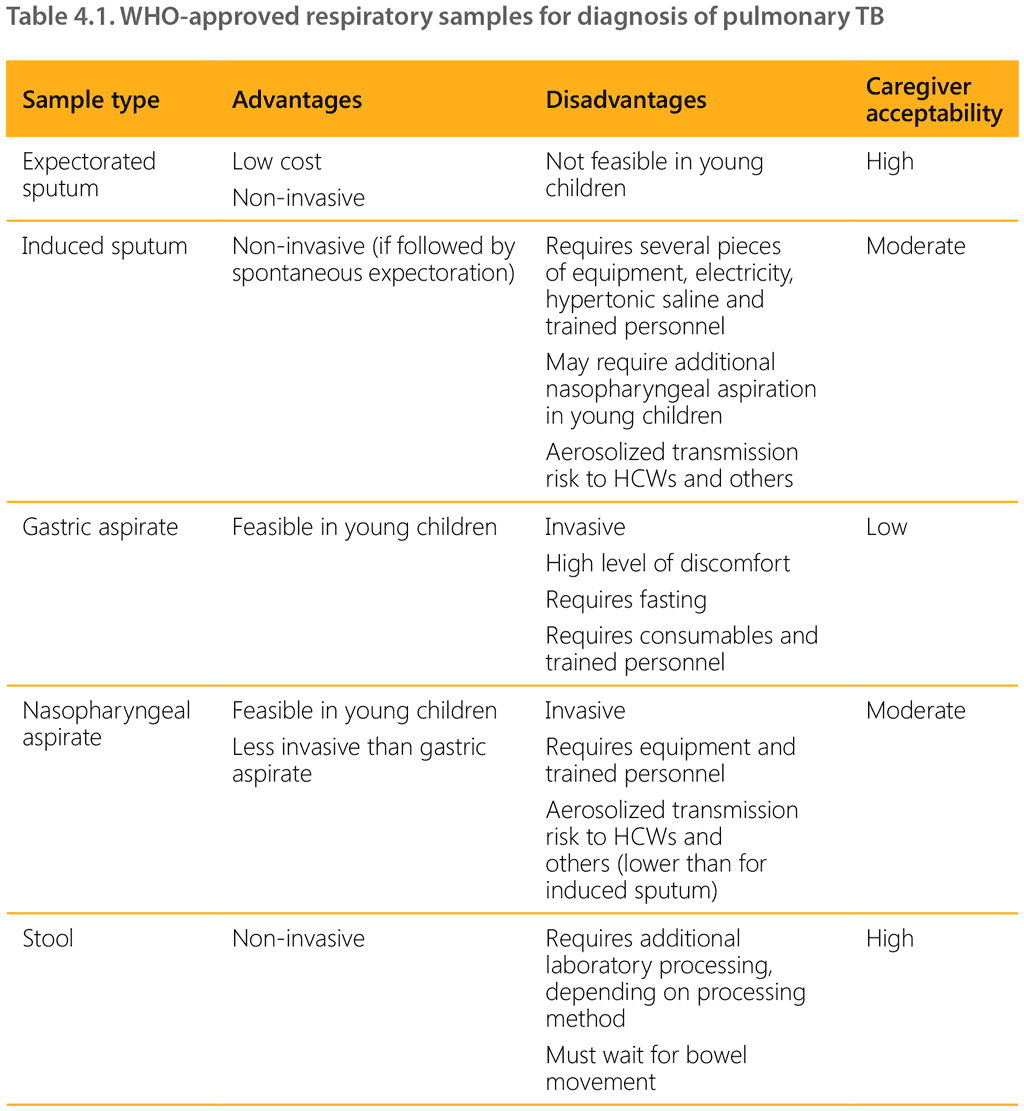
Stool
Stool is a newly recommended specimen for the diagnosis of PTB in children using Xpert MTB/RIF or Ultra (3, 26). It can be used as an alternative specimen, especially in situations when it is challenging to obtain adequate respiratory specimens for the diagnosis of PTB, such as in younger children. Testing stool may be more acceptable and feasible in certain settings, as it is less invasive than gastric or nasopharyngeal aspiration (NPA).
Children with TB swallow sputum containing TB bacilli originating from the lungs, which then pass through the digestive tract, where they can be detected in stool samples. Stool is, therefore, regarded as a respiratory specimen for the diagnosis of TB.
Evidence suggests that sputum (induced or expectorated) and gastric aspirates provide the highest detection yield, but Xpert MTB/RIF (73) and Ultra (web Annex 4) testing of stool specimens yield similar diagnostic accuracy to testing of other respiratory specimens in children (Table 4.2), while having the important advantage of being non-invasive. When using stool specimens, a pre-processing step is needed before inserting the specimen into the Xpert cartridge. Different stool processing methods such as optimized sucrose floatation and the Simple One-step (SOS) stool processing method have been developed for Xpert MTB/RIF and Ultra testing (see Table 4.3).
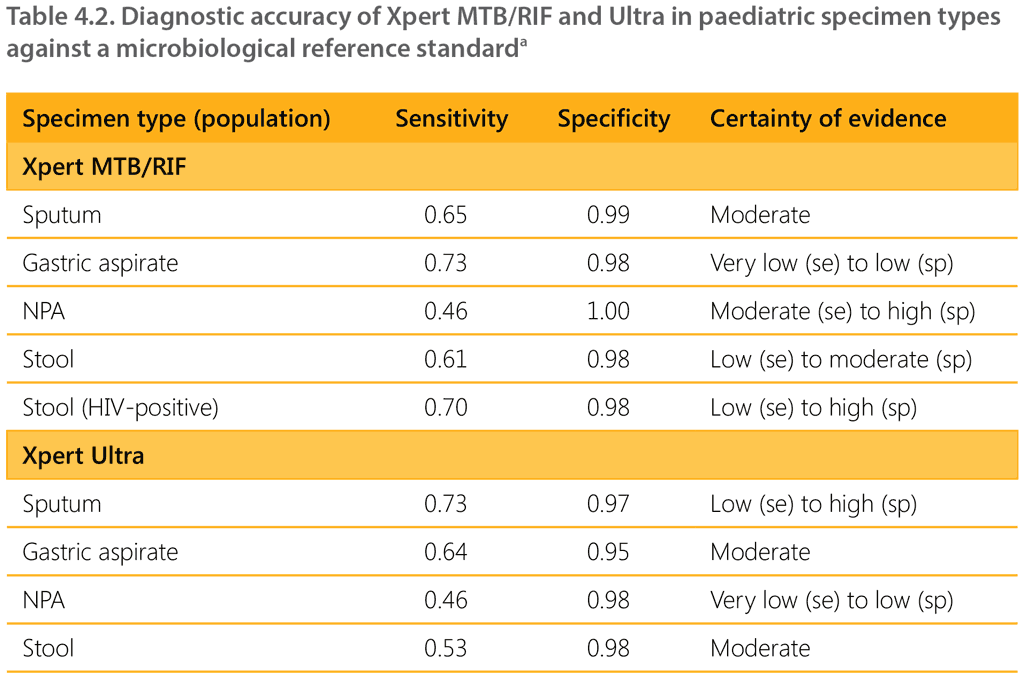
se: sensitivity; sp: specificity.
a Microbiological reference standard: TB culture on respiratory samples

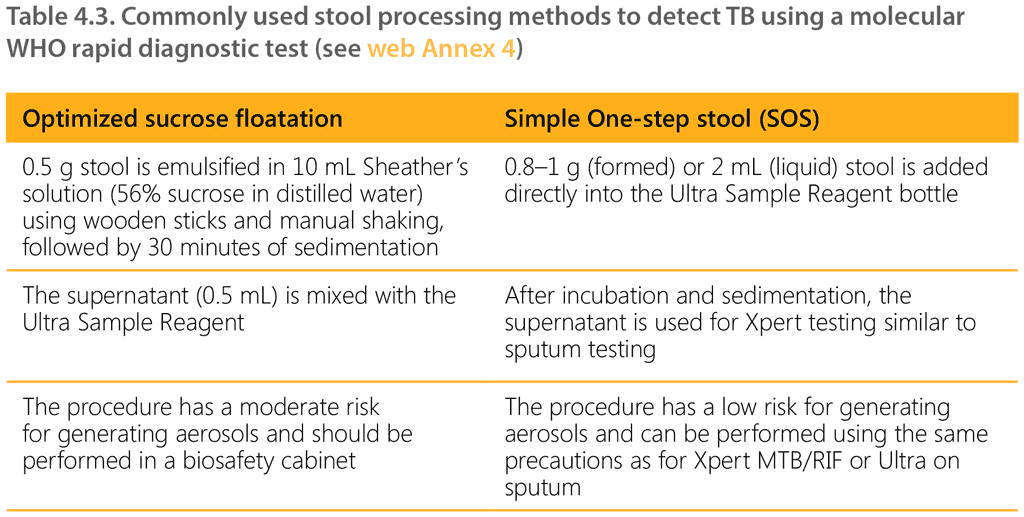
Although both methods can be used for stool processing, preliminary data suggest that the SOS method is easiest to implement at lower-level laboratories and most cost-effective, while maintaining diagnostic accuracy (74) (see web annex 4).
The following additional resources on stool processing methods are available:
- Practical manual of processing stool samples for diagnosis of childhood TB (https://www.who.int/publications/i/item/9789240042650);
- KNCV SOS Stoolbox (https://www.kncvtbc.org/en/sos-stoolbox/);
- TB-Speed tools and resources (https://www.tb-speed.com/resources/).
Nasopharyngeal aspirate
NPA is a relatively simple procedure that is less invasive than gastric aspiration and has a lower risk of nosocomial transmission than sputum induction (75). It can be used in children who are unable to expectorate sputum spontaneously in settings where more invasive procedures are not feasible. The child needs to fast for 2 hours before the procedure. NPA involves suctioning the nasopharynx using a sterile catheter inserted in the child’s nostril with a mucus trap or a suctioning device while the child is in a supine position.
Additional details and sample collection standard operating procedures can be found in Annex 4.
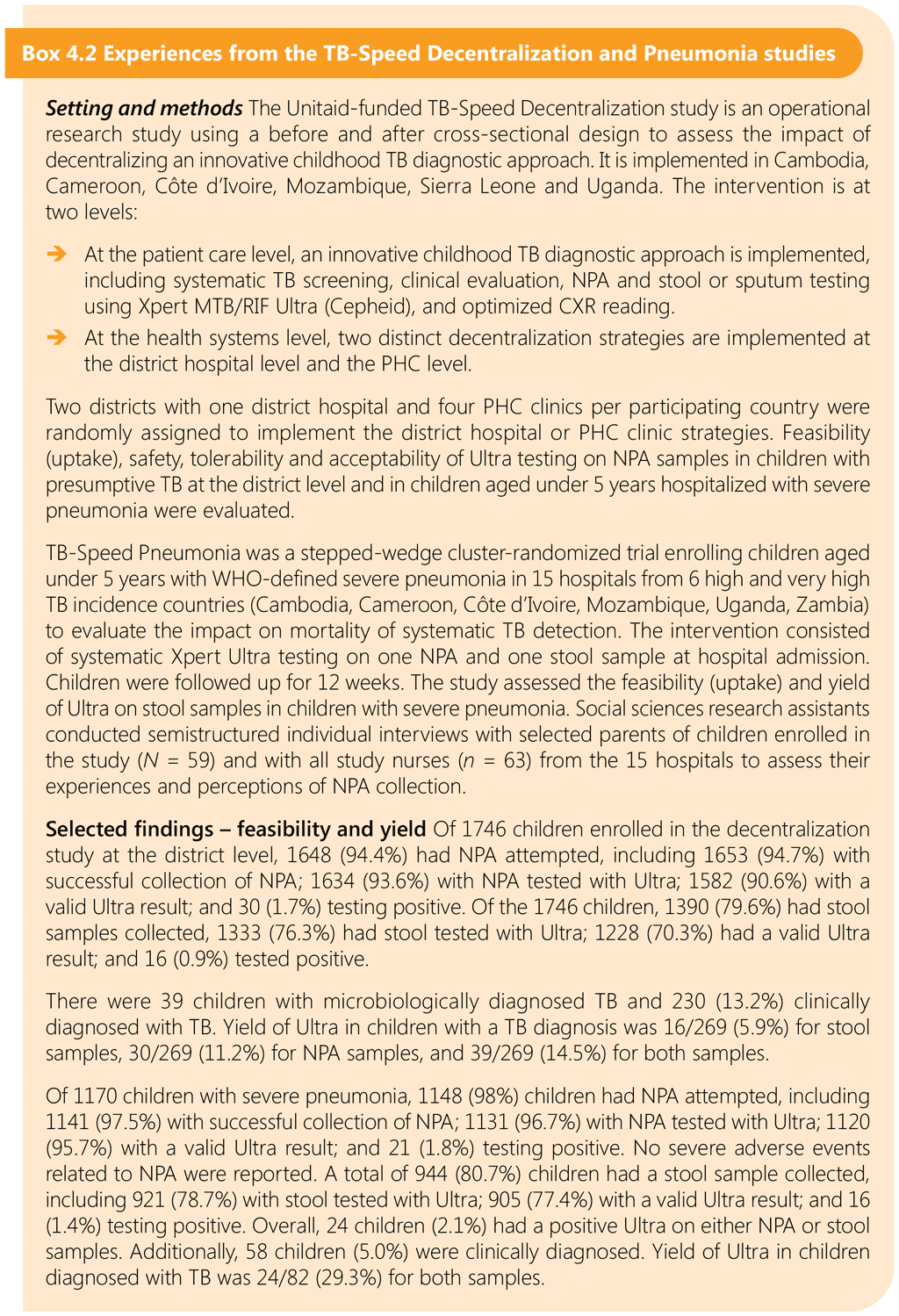
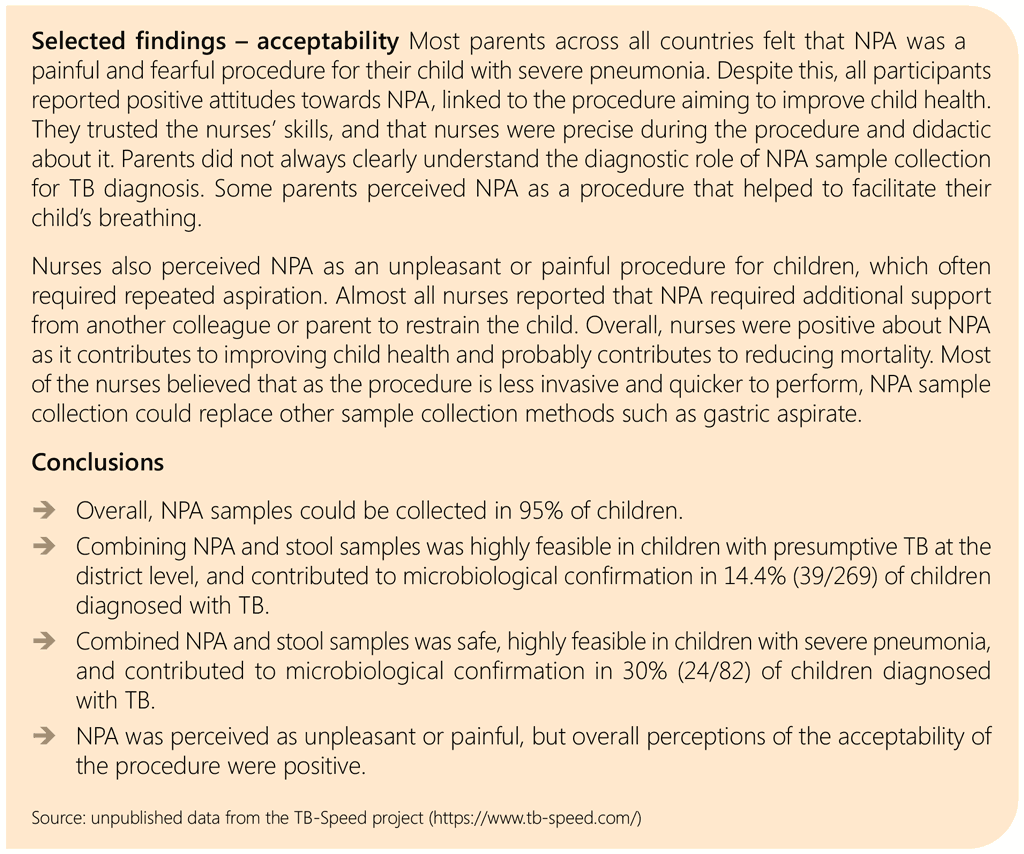
Details on other specimen collection methods can be found in Annex 4.
 Feedback
Feedback